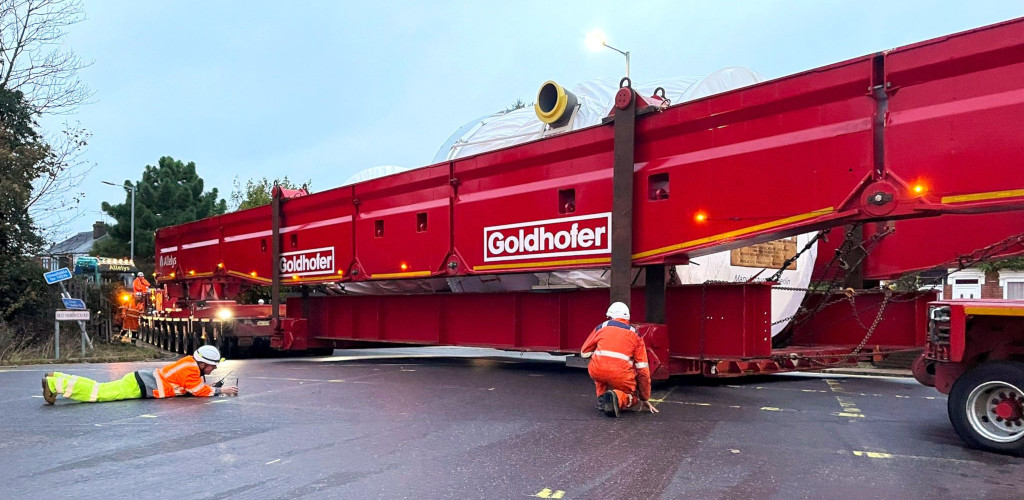Urgent Need for Operator Training and Standards
 By Ton Klijn
By Ton Klijn
From Issue 2, 2024 of Breakbulk Magazine.
 One of the most notable trends in logistics and heavy transport markets in recent years has been the rapid growth in the use of self-propelled modular transporters, or SPMTs.
One of the most notable trends in logistics and heavy transport markets in recent years has been the rapid growth in the use of self-propelled modular transporters, or SPMTs.
For the uninitiated, an SPMT allows very large and heavy loads to be transported with great precision. It consists of a platform supported by computer-controlled axles and the modular nature of the system allows for unlimited configurations by adding axles lines.
They are used for moving massive objects, such as large bridge sections, oil refining equipment, ships, heavy machinery and industrial components – in other words, loads that are too big or heavy for trucks.
The growth in off-site manufacturing and construction, combined with all industries’ continuous quest for greater efficiency, has resulted in a steady increase in the height, size and weight of modules, components and structures needing to be transported, and hence, strong growth in the market for SPMT services.
But that success comes with a price. There is no industry-wide standard or system for training SPMT operators, and the growth in demand has attracted increasing numbers of inexperienced entrants into the market.
The simple and unpalatable truth is that around the world, we are seeing far too many accidents involving SPMTs and we firmly believe that improved technical guidance coupled with properly regulated operator training are essential for the future.
Stability Guidance Published
At the end of last year, ESTA – the European Association of Abnormal Road Transport and Mobile Cranes – published a new transport stability guideline for the use of modular hydraulically suspended trailers including SPMTs.
If we were in any doubt before publication about the industry’s need for such work, those doubts were rapidly dispelled. We had the biggest response we have ever received in my time working with ESTA.
The guideline is the product of ESTA’s SPMT working group whose member companies come from eight different countries, reflecting the widespread concern across Europe.
It specifies the factors to be considered when verifying the global stability and capacity of a modular hydraulically suspended trailer by calculation, assuming that the trailer is operating on a stable surface.
It also details the conditions and considerations for local stability of trailers within a transport arrangement and the stability of the cargo itself and is referenced in the DNV ST-N001 Maritime Operations Standard published by DNV, an independent expert in assurance and risk management.
The guideline will eventually be incorporated into a completely updated best practice guide to be published later this year.
Alongside this work, ESTA has started on plans to develop SPMT operator training through the launch of ETOL – a European Transport Operators Licence – using the structures developed for our European Crane Operators Licence (ECOL).
We will create a new European Crane and Transport Operators Licence organization as an umbrella body that will oversee both the existing ECOL and the new ETOL which will initially focus on training for SPMT operators. We decided that this will be simpler and more efficient than creating a completely new organization from scratch.
Common, professional operator training standards – using the structures developed for ECOL – will not just raise safety and efficiency but will also help the industry recruit the operators it needs going forward.
Of course, we have been working on improving our industry’s safety and efficiency for many years – that is what ESTA exists to do. But the truly exceptional response to this project underlines the crucial importance of our work in this area. We’d love to hear from you if you want to join in.
The companies helping ESTA in this work are Cometto, DNV, Fagioli, Goldhofer, Mammoet, Sarens, Technip, TII Group, Wagenborg, BMS, Collett, Saipem, Siemens Gamesa and Transportes y Grúas Aguado.
Ton Klijn is director of ESTA and chair of the ECOL Supervisory Board. Further information about ESTA can be found at www.estaeurope.eu.
TOP PHOTO CREDIT: Allelys


